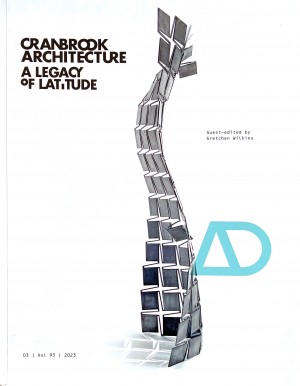Guest-edited by Gretchen Wilkins
The renowned Cranbrook Academy of Art, near Detroit, Michigan, has been described as the epicentre of American Modernism. When it opened in 1932, it combined a stunning
Eliel Saarinen-designed campus with a radically open educational philosophy to attract and produce some of the most influential artists, designers and architects in US history, including Charles and Ray Eames, Fumihiko Maki, Florence Knoll, And Edmund Bacon. Often compared to other experimental schools such as the Bauhaus, Black Mountain College, and Taliesin, Cranbrook's sustained purpose has been advancing a wide, interdisciplinary latitude and self-directed design research to expand and diversify its approaches to architectural practice. There is a deep and persistent idea that open and experimental acts of making should define pedagogy and, by extension, that education should shape practice, not the other way around. Cranbrook's rigorous defiance of dogma and loose grip on the disciplines enables an educational model that combines the practices of art, design, making, and urbanism. In this issue, alumni, faculty, and scholars reflect on Cranbrook's model in light of contemporary and challenging questions in architectural education, practice, and the profession. Published May/June 2023.
New Jersey, 2023, 22 x 29 cm, 136pp, illustrated, Paperback.
